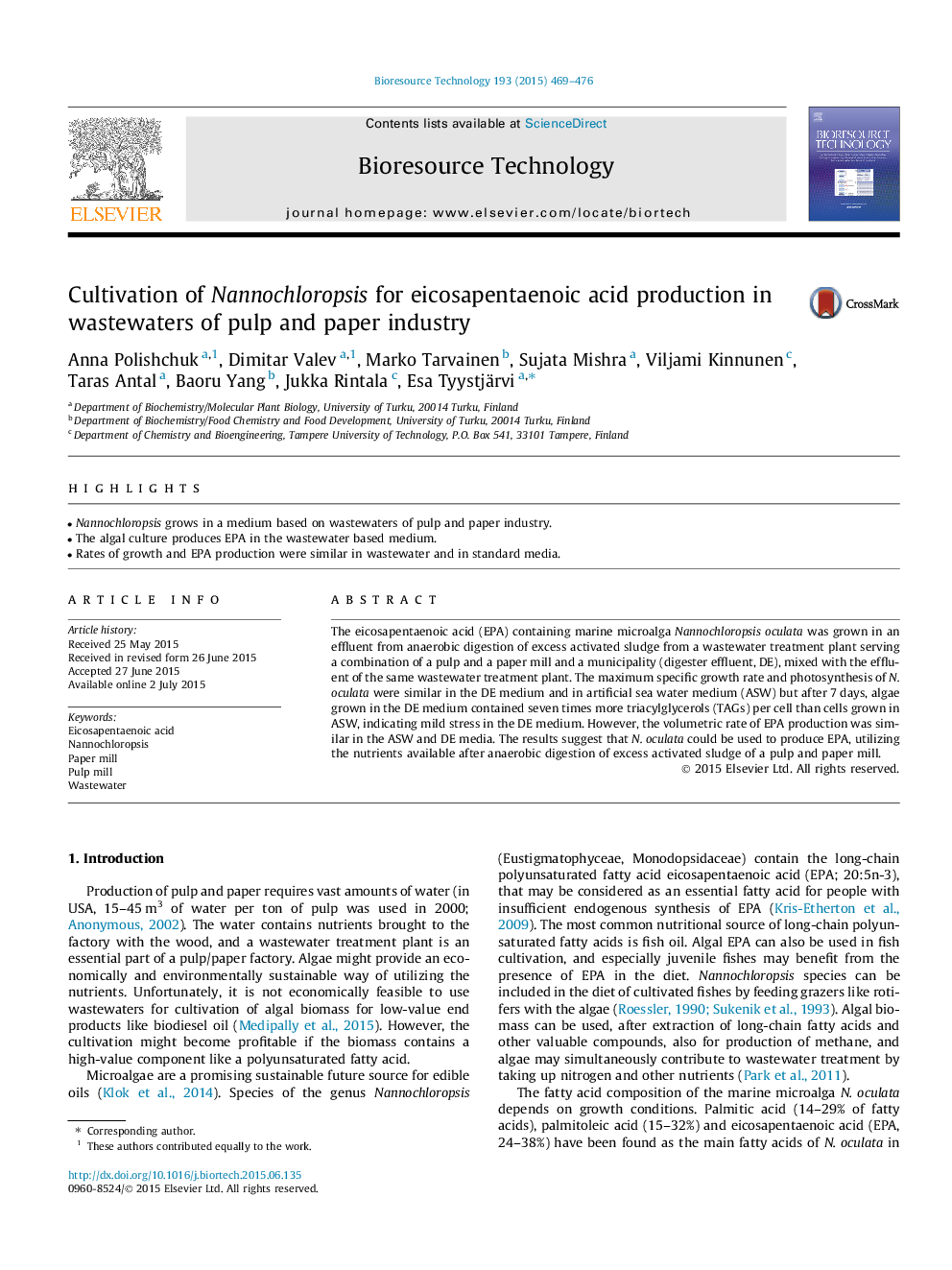| Article ID | Journal | Published Year | Pages | File Type |
|---|---|---|---|---|
| 7074384 | Bioresource Technology | 2015 | 8 Pages |
Abstract
The eicosapentaenoic acid (EPA) containing marine microalga Nannochloropsis oculata was grown in an effluent from anaerobic digestion of excess activated sludge from a wastewater treatment plant serving a combination of a pulp and a paper mill and a municipality (digester effluent, DE), mixed with the effluent of the same wastewater treatment plant. The maximum specific growth rate and photosynthesis of N. oculata were similar in the DE medium and in artificial sea water medium (ASW) but after 7Â days, algae grown in the DE medium contained seven times more triacylglycerols (TAGs) per cell than cells grown in ASW, indicating mild stress in the DE medium. However, the volumetric rate of EPA production was similar in the ASW and DE media. The results suggest that N. oculata could be used to produce EPA, utilizing the nutrients available after anaerobic digestion of excess activated sludge of a pulp and paper mill.
Related Topics
Physical Sciences and Engineering
Chemical Engineering
Process Chemistry and Technology
Authors
Anna Polishchuk, Dimitar Valev, Marko Tarvainen, Sujata Mishra, Viljami Kinnunen, Taras Antal, Baoru Yang, Jukka Rintala, Esa Tyystjärvi,
